Continuation of THE GINKGO BILOBA - unpredictable and sustainable 1/2
On the horticultural scene
On its arrival in Europe, the Ginkgo presents an interest mainly linked to its exoticism, its rarity and its botanical strangeness. It is, then, mainly cloned by cuttings. The only possible sowing is seed imported from Asia and it is worth its weight in gold, or ecu. In France, England and elsewhere in Europe, many trees are therefore male, identical to those of Utrecht, Kew, or Montpellier.
.jpg)
(Leiden – Nl) On the left, the main male subject which turns yellow, on the right the female branch carrying ova.
In 1814, a Swiss botanist, Augustin Pyrame de Candolle, informed that a female subject was listed near Geneva, in a private arboretum, that of Mr. Paul Gaussen de Chapeaurouge, on his property in Bourdigny. This tree, acquired in 1790, annually carries unfertilized eggs. In 1830, two branches of this Swiss tree were grafted in France, on young rootstocks. From then on, female branches will be taken and grafted directly onto old male subjects from various botanical gardens, including that of Montpellier or Leiden in the Netherlands.
This technique, which is spreading, guarantees the fertilization of the eggs. We therefore find this curiosity almost everywhere, notably at the University of Padua, or in Vienna, in the area of Schönbrunn Palace.
This is also how it is easy to see that the female branches form their leaves, later than the male supporting foot, and are still green while all those of the tree take on their autumn color.
Despite this enormous longevity and its resistance to any test, the craze for the horticultural varieties of maidenhair is very recent. Twenty years ago, only a few varieties were known, listed and multiplied.
Since then, interest has grown, and new discoveries have multiplied over the years. In August 2010, Heidi Dieck, from the Herrenkamper Gärten nursery in Germany, described more or less 200 distinct varieties in her book 'Ginkgo, das Sortenbuch'. Many varieties are still little observed and described, this work is almost the only "recent" referencing.
More and more horticulturalists are falling in love with it, and attractive new varieties are blooming all over Europe, North America, but also in China. Funny thing, we see that the vast majority of new Chinese selections are females, while in the West, it is more the males that are popular. You just have to understand that Asians, fond of pits, consider it more like a fruit tree, beyond its symbolic aspect.
Today, our list of Ginkgo varieties reaches 400 references, excluding synonyms.
The ginkgo is a plant, from a horticultural point of view, particularly unstable. Fixing a variety and keeping some, over the seasons, all of its characteristics are rather random. To believe that this old 'owl' adapts and changes to the slightest climatic or environmental variation. Moreover, the same plant can have several different foliage forms or branches behaving in a completely heterogeneous manner. His own way of going through time and history.
In cultivation, moreover, it is better to let the Ginkgo fend for itself. Pampering your Ginkgo trees by dint of fertilizer, or under ideal conditions, causes them to lose their desirable characteristics. On the contrary, it is preferable to slow down their growth, in particular to preserve the variegated character of certain varieties. It is advisable to prune them, formwork, as roots. For older specimens, in the ground, a few spring spades in the ground, around the circumference of their roots, help to slow down.
Adding fertilizer systematically results in large, beautiful green to bluish leaves. If this turns out to be interesting for varieties like 'Jade Butterfly', 'Jagged Jade', 'Mascia, or' Select Wit ', selected for their very beautiful large green or blue leaves, it should also be avoided. for fastigiated varieties, like 'Blagon', 'Obelisk' or even 'Denise' which is particularly narrow. The fattening promotes the appearance of sturdy, rather horizontal side branches, which risks disfiguring the slender figures.
We have noticed that a potted Ginkgo grows little, if at all. He simply adapts to his living conditions. A Ginkgo plant can therefore easily find its place on a balcony and never become bulky.
When planting in the ground, it is essential to break up the root ball and free the hair from the roots. It is also necessary to make a large hole of random shape (especially not cylindrical) and loosen the soil around the foot as much as possible. Without these precautions, it will take longer for your Ginkgo to realize that it is no longer in its pot and start its normal growth. The roots must be allowed to extend their course naturally. It is very often observed that a freshly planted Ginkgo can take several years before it starts to grow. Following these last tips should reduce that lethargy time.
40 varieties of Ginkgo
40 SHADES OF GREENS
‘All Gold’
.jpg)
The absolute dream. The only selection with yellow foliage all year round.
It buds yellow green and stays very yellow all summer. In the fall the leaves tend to curl and turn pale yellow.
‘Boleslow Chrobry’
.jpg)
Here a late summer leaf.
Butterfly-shaped with two well-spaced lobes, the leaves turn a sea-blue tint at the end of the season. The juvenile leaves are more whole and quite green.
‘Bernheim Arboretum’
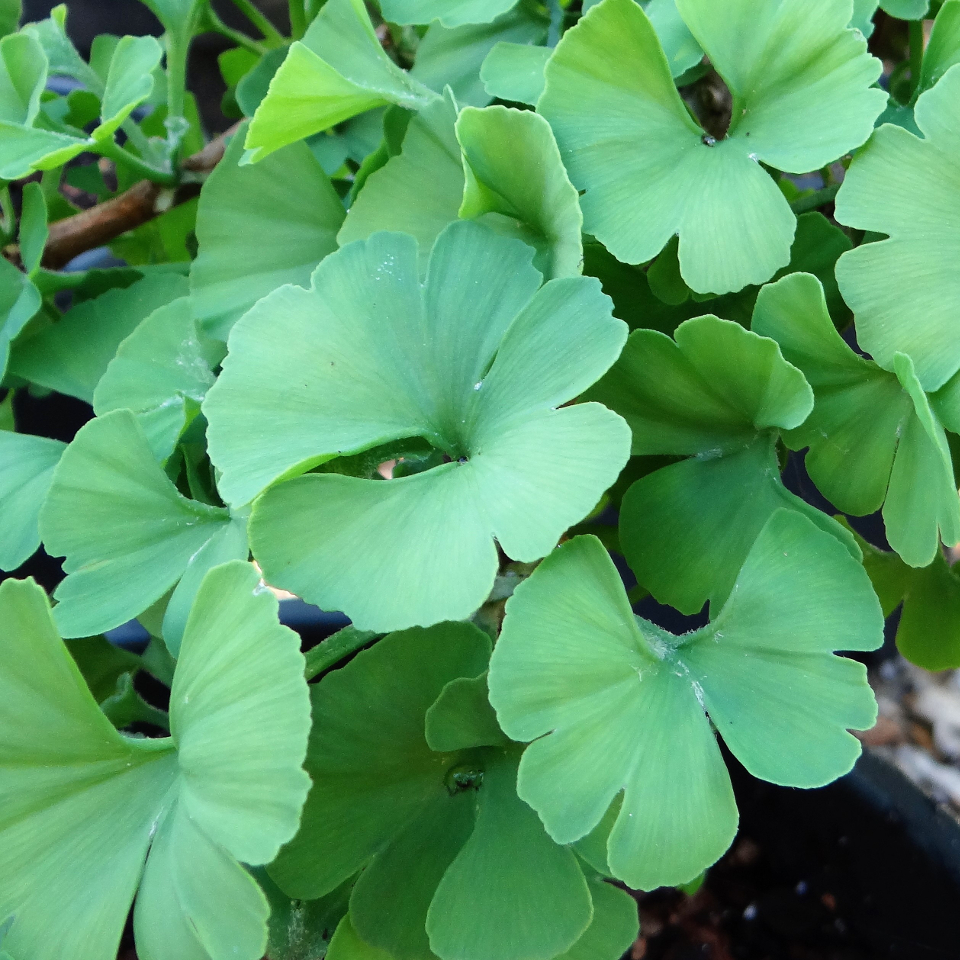
A practically round sheet of 2 cut lobes.
This miniature form has a compact and irregular habit with small, round leaves. Its fall color is vibrant.
‘BZN’

With rather olive green foliage, its twigs are twisted.
Small, slow growing tree with random habit. The leaves are also thick and curled up.
‘Clica’

The leaves of this variety are particularly crumpled.
Small, slow growing tree with irrgular shape. The leaves are a beautiful bright green.
‘Freak’
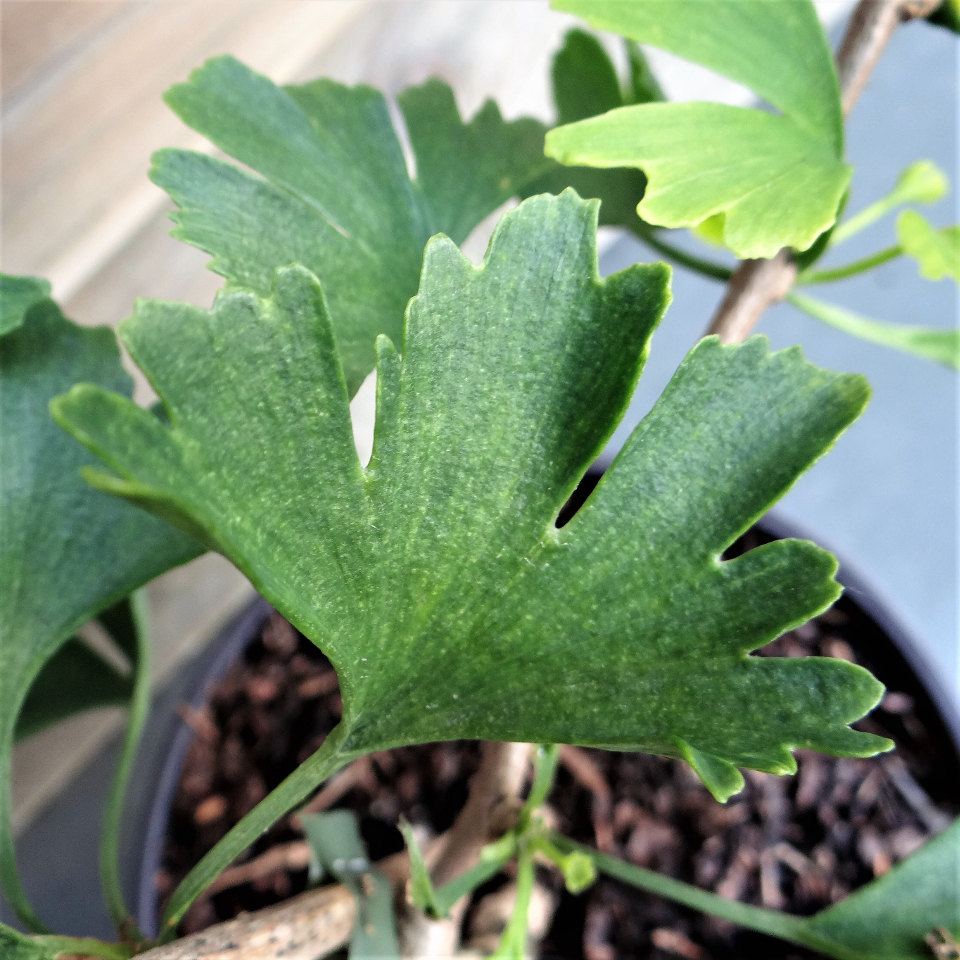
Deep green, the leaves are particularly indented and very irregular.
Slow growing, the branches are horizontal to vertical.
‘Golden Girl’
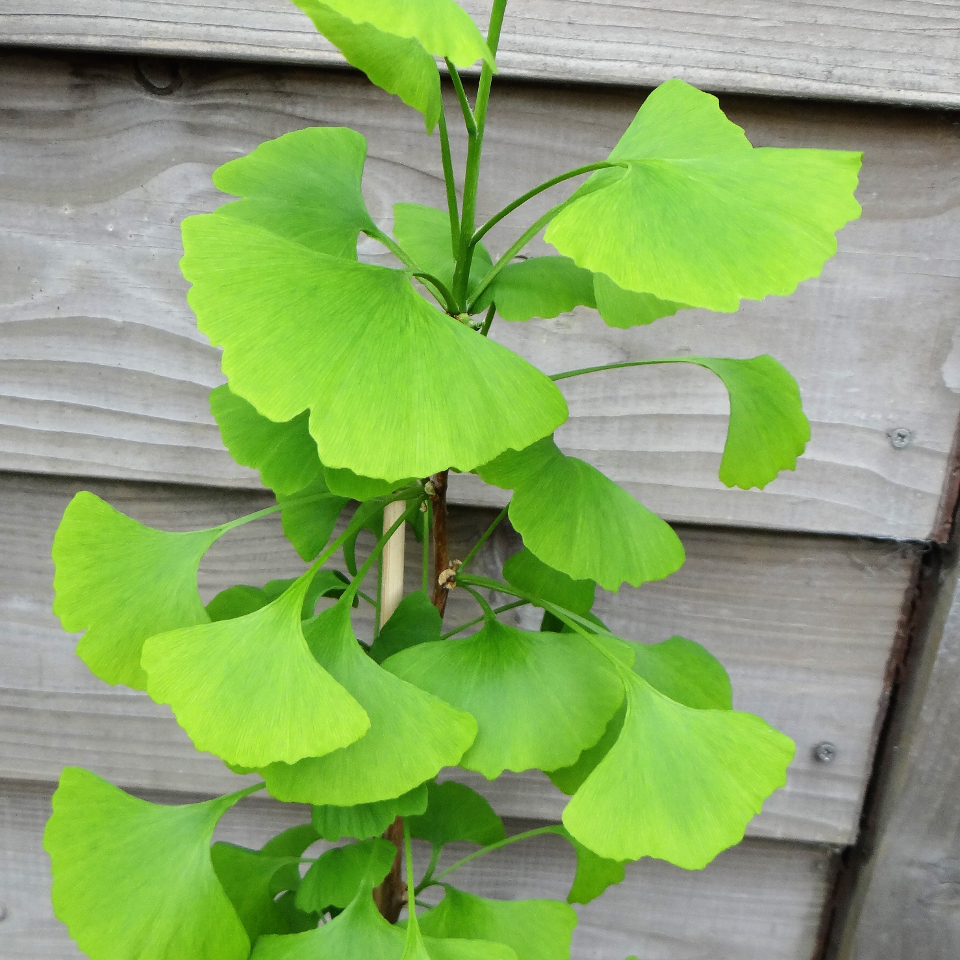
Very nice selection with well-defined leaves and a very light green hue. They are regularly drooping, bringing an elegant touch.
Its growth is slow and regular.
‘Jagged Jade’
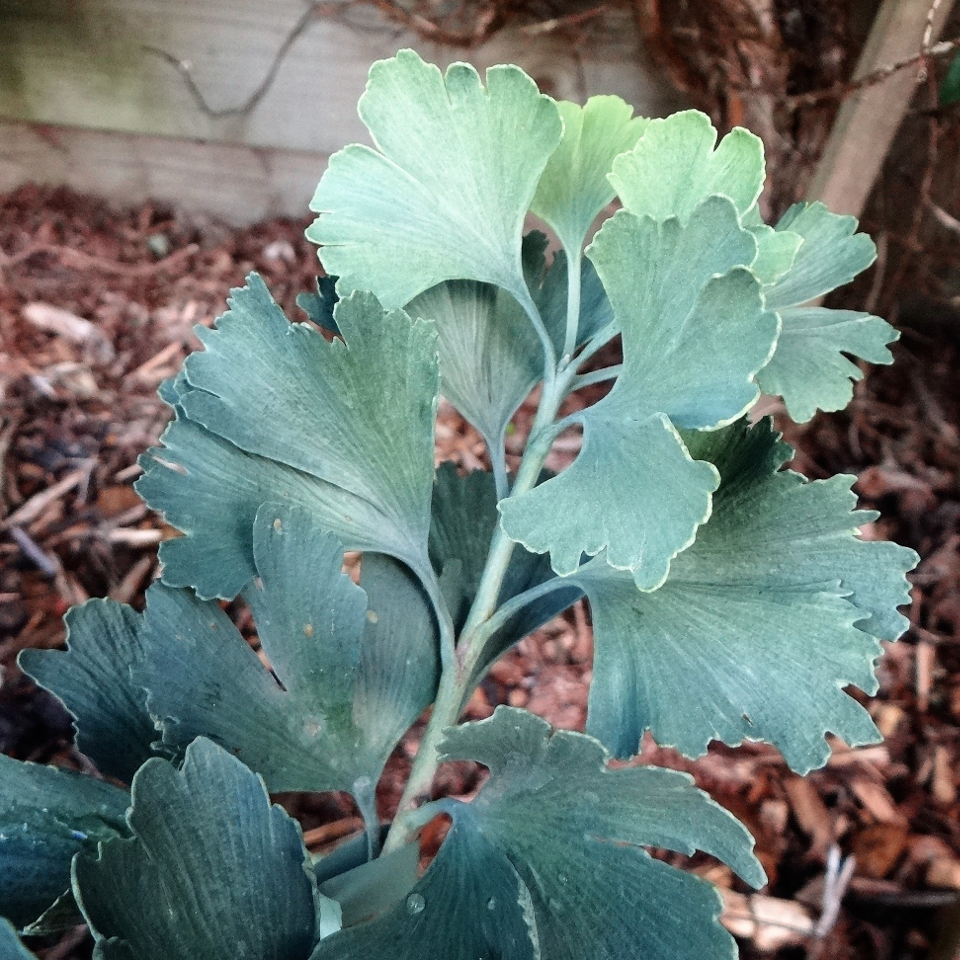
Without doubt one of the bluest Ginkgos. The color darkens as the season progresses to become creepy.
This rather shrubby variety can reach a few meters.
‘Kopista’
.jpg)
Dwarf variety with a rounded shape.
The leaves are polymorphic, entire, cut or atrophied. A beautiful emerald green, this is a male selection.
‘Little Joe’
.jpg)
Ginkgo with particularly small leaves, 2cm maximum.
This miniature Ginkgo grows in a small column. From year to year it varies from olive green to bluish green.
40 VARIEGATED VARIATIONS
‘Beijing Gold’

One of the most original variegation, in longitudinal spots rather than streaky.
This Ginkgo is completely white to creamy. The contrast of the variegation appears throughout the season.
‘Californian Sunset’

Variegated version of ‘Saratoga’.
The leaves are drooping, narrow, triangular and longitudinally streaked with yellow. The variegation is stable, on a rather erect tree. Robust growth.
‘Françoise’
.jpg)
This new belgian selection of Ginkgo is not yet on the market.
Its color gradient, from green to white, is particularly dazzling.
‘Löver’
.jpg)
The leaves of this Ginkgo are irregularly edged creamy white.
This characteristic is more or less marked from year to year.
'Majestic Butterfly’
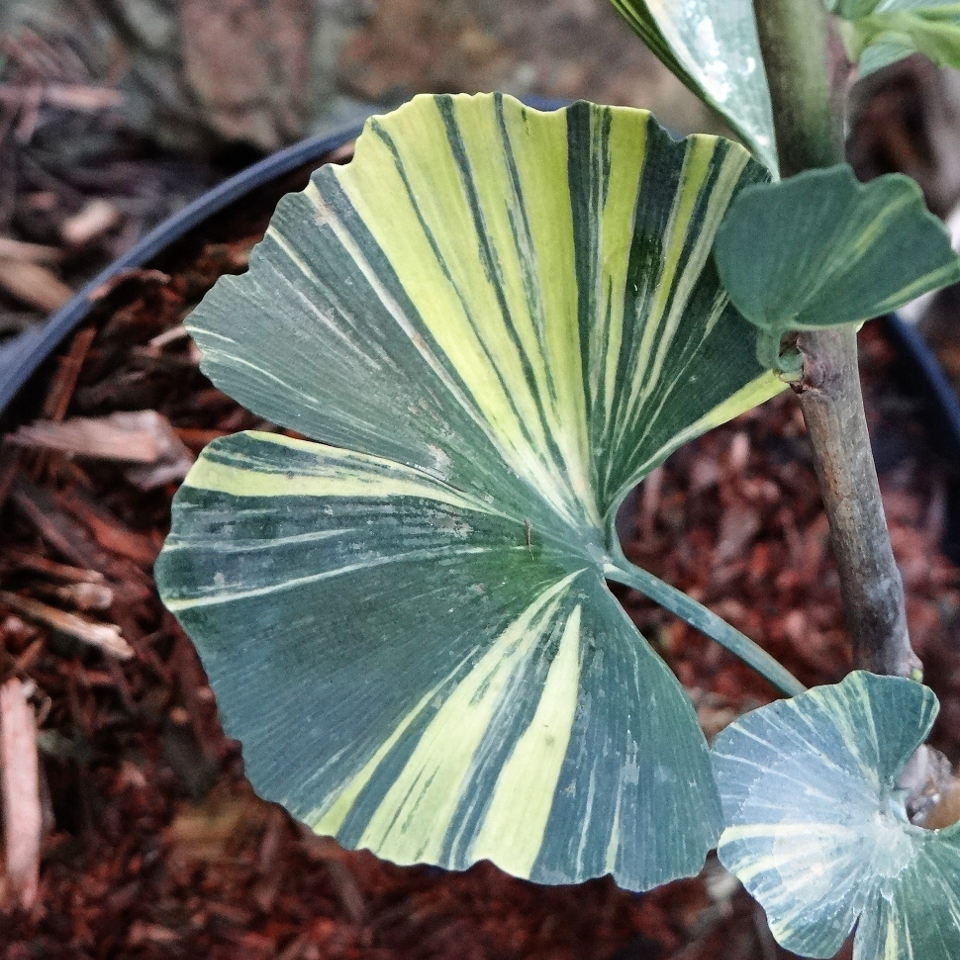
Variety with variegated leaves of blue and yellow, sometimes green, but also cream.
Unfortunately this character is very unstable and can get lost.
‘PV4 Variegata’

The cream variegation of this Ginkgo is very original and sometimes offers broad light bands.
The leaf, in a semi-circle, is beautiful and regular.
‘Montezuma’
.jpg)
Very stable variegated variety.
The leaf in large irregular fan offers variations of yellow and green very interesting. Rather fastigiated port.
‘Peve Lobo’
.jpg)
Pretty wavy fan leaves, generously variegated with yellow and dark green, very contrasting.
‘Snow Cloud’
.jpg)
Variety introduced in the early 2010s, a delicate combination between 'Beijing Gold' and 'Löver'.
Very thin twigs, very slow growth, the leaves adopt the variegated mix of its two parents.
‘Sport Tit’
.jpg)
Mutation of the 'Tit' variety with original leaves, green, white, or shared between these two colors.
40 DIFFERENT MANNERS
‘Baldii’
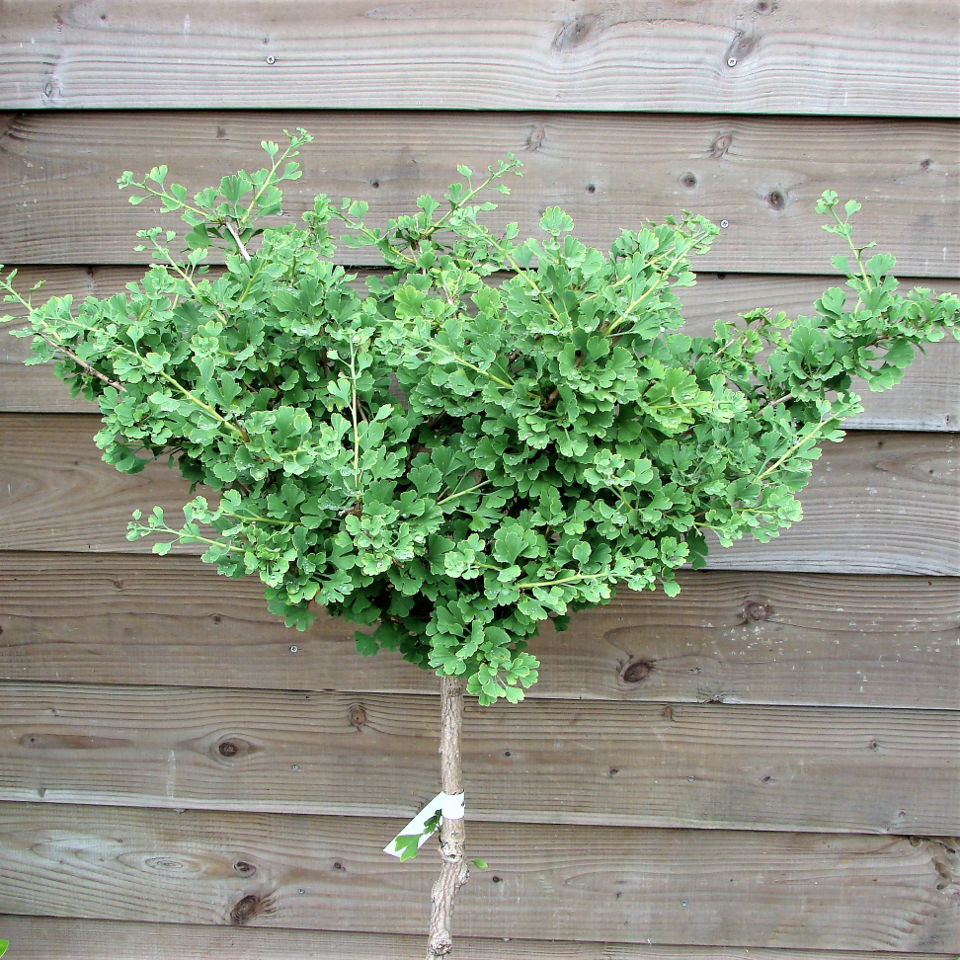
Miniature selection with a fairly dense habit.
The leaves are generally small, jagged and irregular. The crown appears in a flattened ball. Stem grafted or not.
‘Fastigiata’
.jpg)
Particularly narrow and tall, this Ginkgo is a strong signal in any garden.
Most of its branches are vertical. It grows up to 15m.
‘Globus’
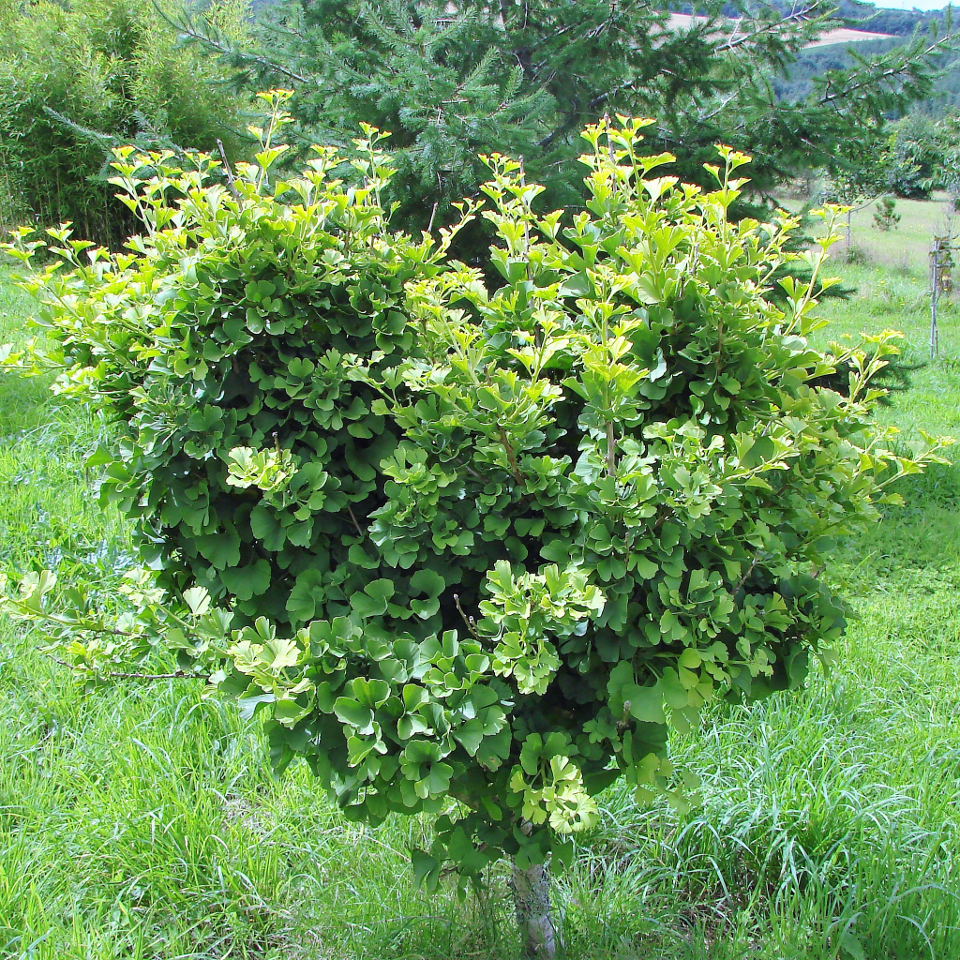
Variety with a dense and compact ball habit, reaching 1.5m to 2m in diameter.
The leaves are round and generous.
‘Horizontalis’

Ginkgo with a particularly broad crown, presenting mainly horizontal branches.
The graft point can be performed at different heights.
‘Kathinka’
_002%20(4).jpg)
Selection recently introduced to the market. Globular and very small version in a dense and regular ball.
Annual growth of 2 to 4cm.
‘Nutans Pendula’
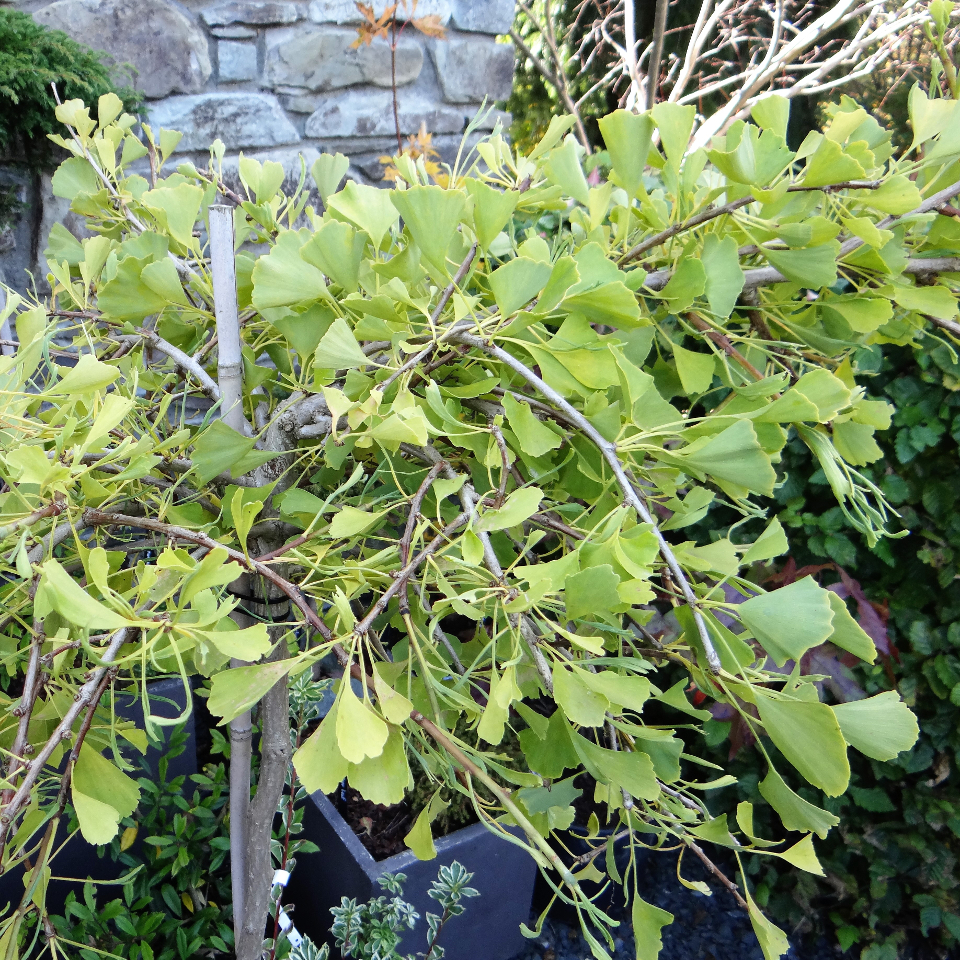
Very interesting weeping version of Ginkgo with beautiful arching and drooping branches.
The leaves are polymorphic.
‘Obelisk’
.jpg)
Ginkgo with erect to ovoid habit. Its crown becomes denser with maturity. Its growth is slow. Height from 1 to 2m.
It remains a small tree easy to place in any garden.
‘Mariken’
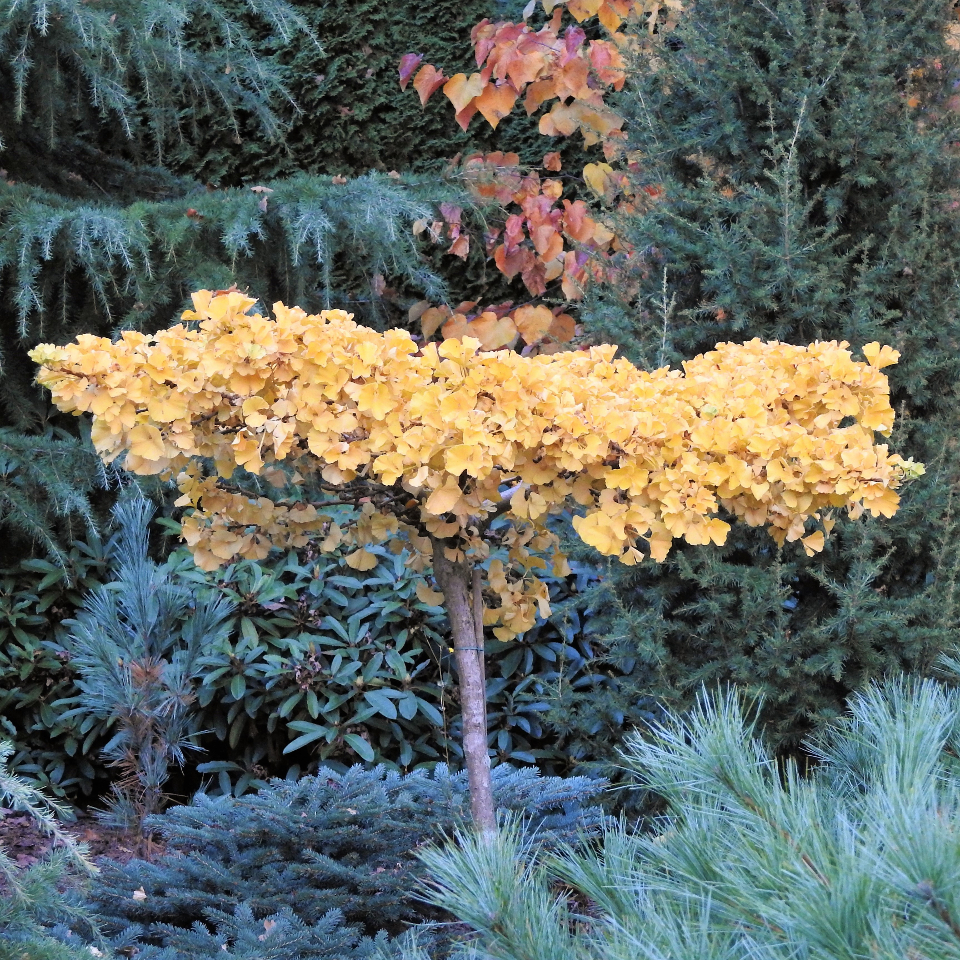
This dwarf Ginkgo grows in a largely flattened ball, compact and dense.
Its autumn color is particularly strong.
‘Jeosaphat’
.jpg)
Miniature variety, its growth is extremely slow.
Its habit is rather erect, with a dense crown. The leaves are small and round.
‘Pendula Selection’

Selection with upright main trunk and drooping branches and leaves.
Particular silhouette that does not take up space in the garden.
40 LEAF METAMORPHOSES
‘Mayfield’
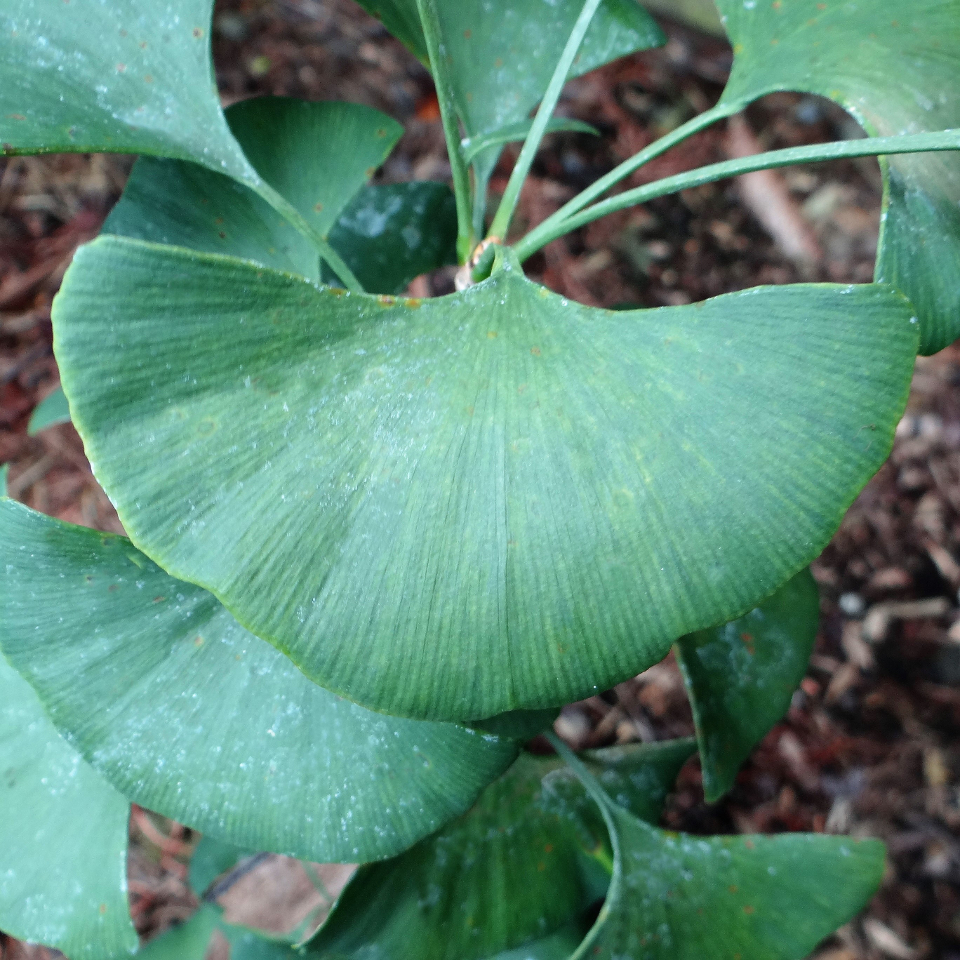
With its leaf in a perfect semi-circle, whole, this Ginkgo is undoubtedly the most regular in its intense green foliage.
The fall color is more lime green.
‘Mephisto’
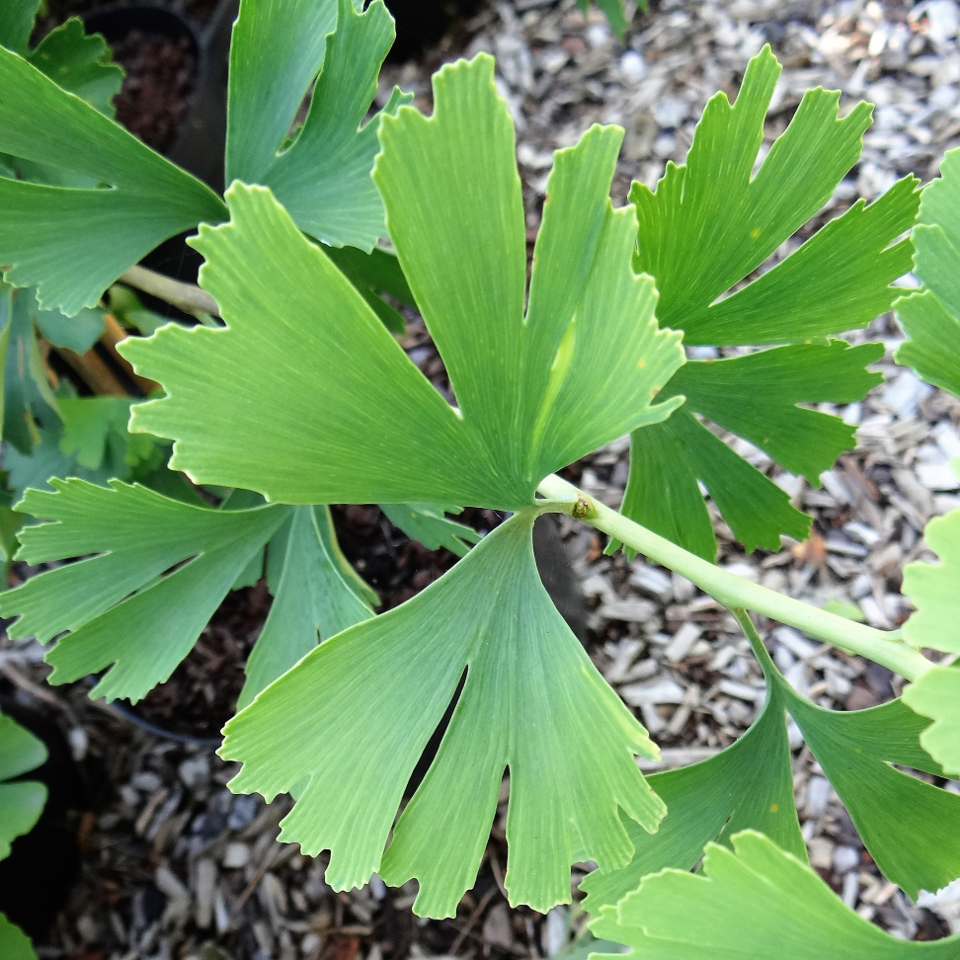
Selection of Ginkgo with deeply cut leaves.
This shrubby variety, with a random habit, presents a very beautiful aerial green foliage.
‘Mutation’
.jpg)
New variety of Ginkgo with very large leaves of 8 to 10cm, particularly cut.
‘Saratoga’

Selection of Ginkgo with leaves in narrow triangles, gracefully drooping.
Its growth is moderate, it forms a very pretty little tree ideal for all gardens.
‘Tubifolia’
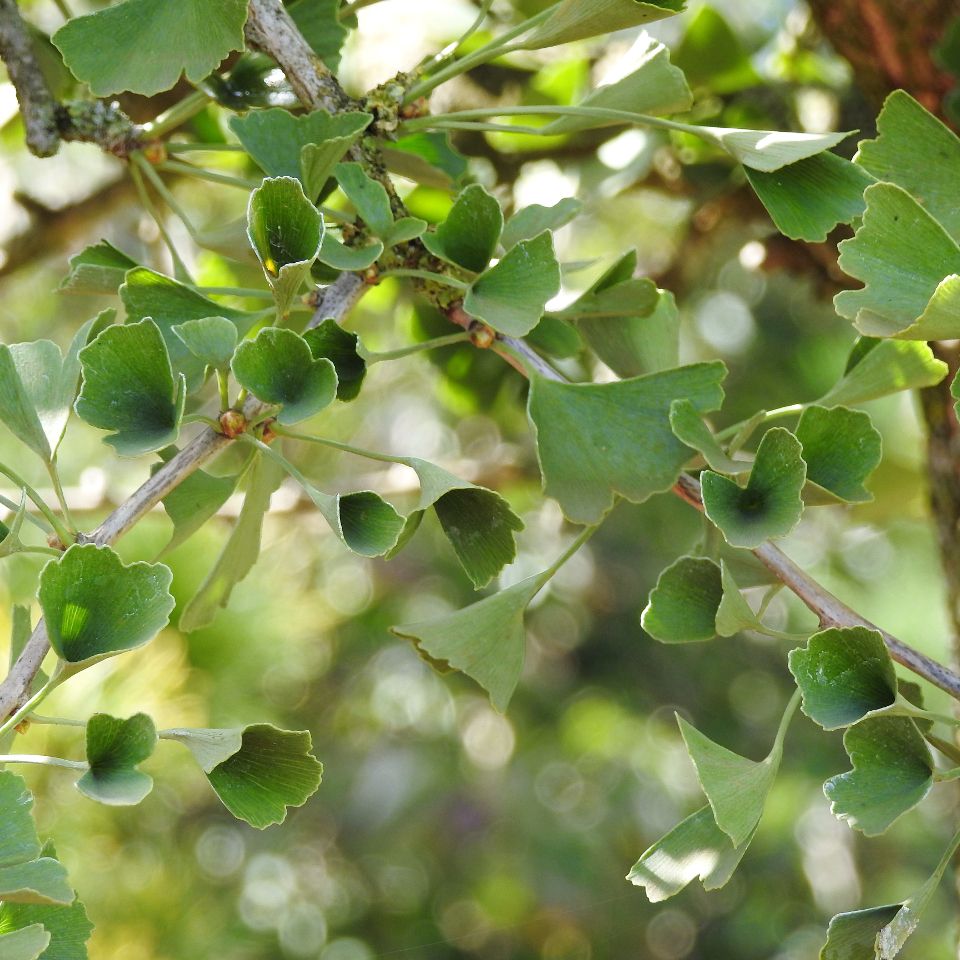
The majority of the leaves of this variety curl up on themselves and form having small inverted cones, providing an attractive structure.
40 GOLDEN SHADES
‘Dr Gerd Krüssmann’

Very nice selection with buttery yellow leaves in autumn.
Slow growing, it forms a pretty, very decorative bush.
‘Hayanari’

Old Chinese selection, with a beautiful gradual autumnal coloring.
It turns very intense yellow at the heart of the season.
‘Late Fall Gold’
.jpg)
Ginkgo variety with a spectacular golden yellow color in autumn.
The leaves stay on the plant for a long time which gives it additional appeal.
‘Princeton Sentry’
.jpg)
Very nice selection with beautiful golden foliage in autumn.
Its growth is robust and its port well branched.
‘Yellow Dragon’

Variegated varieties do not really color in fall, the leaves turn brown and drop.
This selection is however particularly attractive in autumn, when the green of the leaves turns golden yellow.
Bénédicte Nicolas - 2018